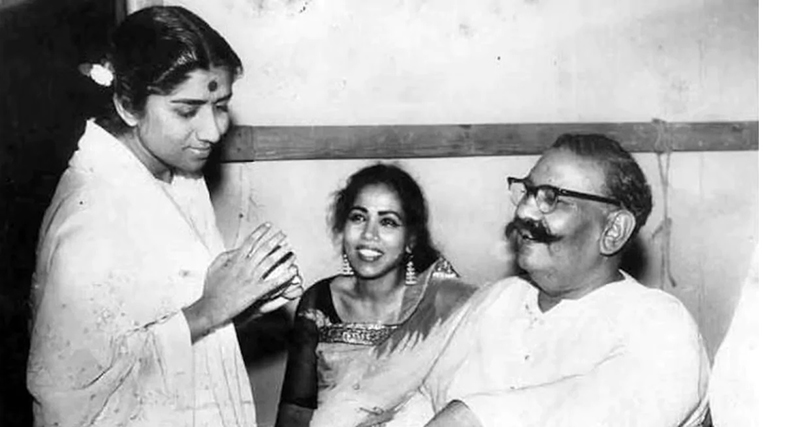 Punjab
Punjab
In the heart of Delhi’s cultural landscape, the India International Centre recently reverberated with the soulful strains of a rare musical tradition.
Abu Dhabi-based Bengali vocalist Kaustuv Kanti Ganguli, steeped in the Patiala gharana gayaki, delivered a performance that not only enchanted the audience but also evoked a deep sense of reflection on how far this illustrious gharana has traveled—both geographically and in terms of its cultural significance.
The Patiala gharana, once a vibrant and influential musical tradition rooted in Punjab, has now become a rarity in its homeland.
This gharana, renowned for its rich khayal compositions, intricate taals, and emotive renditions, was once synonymous with the classical music scene in Punjab. Yet today, the gharana’s most prominent exponents are scattered across the globe, far removed from the land where it all began.
Punjab: A Fading Epicenter of Classical Music
Punjab’s association with classical music is both deep and historic. The state was once a hub of musical innovation and education.
The Harivallabh Sangeet Sammelan, India’s oldest classical music festival, had its origins in Jalandhar, while the Gandharva Mahavidyalaya in Lahore, established in 1901, was the first institution to bring formal music education out of the confines of the guru-shishya parampara (teacher-disciple tradition).
Yet, despite these illustrious beginnings, the region has seen its classical music tradition wane over the years.
The Patiala gharana, Punjab’s most distinguished khayal tradition, now finds its most ardent practitioners living far from Punjab. Once the pride of Punjabi culture, the gharana’s presence in the state has diminished, with only a handful of artists still connected to its roots.
The Diaspora of Patiala Gharana
The most celebrated figure of the Patiala gharana, Ustad Bade Ghulam Ali Khan, never resided in Punjab. His influence, however, extended far and wide, shaping the musical journeys of many artists who continue to keep the gharana alive. His sons, Ustad Karamatullah Khan and Ustad Munawar Ali Khan, along with their descendants, have played a crucial role in preserving the gharana’s legacy. Yet, these artists are more associated with Kolkata and other cities than with Punjab itself.
Kolkata, in particular, has become a repository of Patiala gayaki talent. Legendary singers like Pt Ajoy Chakraborty, his daughter Kaushiki Chakraborty, and their disciples have kept the flame of the Patiala gharana burning bright in Bengal. Kaushiki, perhaps the most popular singer of the gharana today, laments the lack of Punjabi compositions in her repertoire, despite her deep connection to the tradition.
Maharashtra, too, has its share of Patiala gharana exponents. The late Pt Vasantrao Deshpande and Mumbai-based Ramakant Gaikwad are among those who have contributed to the gharana’s survival outside Punjab. Gaikwad’s journey from Pune to mastering the Patiala style under the guidance of maestros like Pt Nayan Ghosh is a testament to the gharana’s enduring appeal, even beyond its geographical origins.
The Lingering Echoes of Punjabi Khayals
Punjabi was once one of the few languages in which khayals were composed, alongside Urdu, Hindi, and Brajbhasha. Today, however, the tradition of Punjabi khayals is at risk of being lost forever. The language barrier has proven to be a significant hurdle for non-Punjabi-speaking singers, leading to the gradual disappearance of many traditional compositions.
Ustad Jawad Ali Khan, a prominent Patiala gharana exponent, has expressed his sorrow over the state of the gharana today. He notes that only Punjabi-speaking singers could truly capture the essence of traditional Punjabi khayals, and as a result, many compositions have been forgotten. The virile and robust gayaki of the Patiala gharana, once celebrated for its powerful renditions and complex taals, is now a shadow of its former self.
The loss is not just in terms of musical compositions but also in the intricate taals that were once popular in Punjab. Taals like ‘ikwai’ (16 beats), ‘firodast’ (14 beats), and ‘sulfakta’ (five beats) have all but disappeared from the concert stage, their complexity perhaps proving too challenging for modern exponents to master.
A Tradition at a Crossroads
Kaustuv Kanti Ganguli’s performance in Delhi serves as both a celebration and a poignant reminder of what has been lost. A professor of computing at Zayed University in Abu Dhabi, Ganguli’s passion for the Patiala gharana is evident in his deep, resonant voice, which echoes the tonal richness of Ustad Bade Ghulam Ali Khan. Yet, as he brings this tradition to audiences far from Punjab, the question arises: what is the future of the Patiala gharana in its homeland?
Music, it is often said, knows no borders. It is a universal language that transcends geographical and cultural boundaries.
Yet, when a tradition like the Patiala gharana, so deeply rooted in a specific cultural and linguistic context, begins to fade in its place of origin, it raises important questions about cultural preservation and the role of regional identity in the arts.
The Patiala gharana’s journey from the courts of Punjab to the global stage is a testament to its enduring appeal and adaptability.
However, as the gharana continues to thrive outside Punjab, the challenge remains to reconnect it with its roots and ensure that the rich traditions of Punjabi khayals, bandishes, and taals are not lost to history.
For the echoes of the Patiala gharana to continue to resonate, it is imperative that efforts are made to nurture and revive its presence in the land where it was born.
(Photo and text courtesy: Khalsavox.com)
Support Our Journalism
We cannot do without you.. your contribution supports unbiased journalism
IBNS is not driven by any ism- not wokeism, not racism, not skewed secularism, not hyper right-wing or left liberal ideals, nor by any hardline religious beliefs or hyper nationalism. We want to serve you good old objective news, as they are. We do not judge or preach. We let people decide for themselves. We only try to present factual and well-sourced news.







